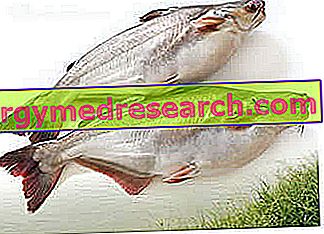Generality
Pangasius is a fishery product of typically eastern origin; it is a freshwater fish originating from Indo-Chinese Asia, where breeding is concentrated mainly at the mouth of the Vietnamese rivers.

Pangasius, like catfish, has no selective feeding. It prefers worms, crustaceans and molluscs but does not disdain small fish and vegetable products (seeds, etc.). The human being is the only predator of adult specimens, too large to be caught by birds, reptiles or other fish.
Pangasius belongs to the Pangasiidae family, Genus Pangasius, Species hypophthalmus ; the binomial nomenclature of pangasius is Pangasius hypophthalmus .
Pangasius closely resembles catfish; it has a robust body, a flattened head, a mouth surrounded by barbs and almost as wide as its head. It has fins of small dimensions, except for the anal and caudal ones which are more developed. The color of the pangasius is brown on the back and white on the belly; the skin is not provided with obvious scales. Pangasius quickly reaches considerable dimensions and the body is NOT particularly thorny; in fishing they are frequent specimens of almost a meter and a half for about 20kg of weight, while in breeding the maximum yield is obtained at a few months of life (less than a year), when it touches 2kg of weight. By virtue of:
- low breeding costs (feed and tanks)
- high productivity (rapid growth)
- high yield of the animal (little waste and lots of meat)
- neutral taste
- low price
pangasius is one of the most important fish species for export, therefore for the economic support of Vietnam, Thailand and to a lesser extent of Burma.
Nutritional characteristics
1 Let's start by pointing out that, despite the fact that pangasius comes from one of the most polluted rivers on the planet (Mekong), the chemical analysis of meat does NOT distinguish levels of contaminants (such as mercury, organochlorine pesticides and polychlorinated biphenyls - PcB) such that it can consider a food at risk.
Currently, pangasius is a well-known and consolidated source of food also on the tables of Italians, Westerners in general but also Russians. In a thorough chemical analysis, pangasius offers no nutritional advantage over any native species (be it fishing or breeding), so there is no reason to prefer it over our own (more nutritious) fish.
| Pangasius nutritional composition | ||||||||||||||||||||||||||||||
 | ||||||||||||||||||||||||||||||
Nutritional values (per 100 g of edible portion) | ||||||||||||||||||||||||||||||
| ||||||||||||||||||||||||||||||
Being extremely competitive, pangasius is becoming increasingly popular in our diet, taking on an "almost gastronomic routine" role; today, restaurants or canteens offering low-cost pangasius are not rare in the fixed weekly menu.
The concentration of water in pangasius meats is quite high, as is "often" even that of sodium (despite being a freshwater fish). This could be caused by the use of a notified food additive (therefore perfectly legal in our country too) called sodium tripolyphosphate (E451), useful for preserving protein hydration at the time of thawing of the fillets. The fat intake is modest but, of these, about half is of the saturated type; this is a very important aspect since the consumption of fish is indispensable to increase the essential polyunsaturated ration of the ω ‰ 3 family, which is instead lacking in pangasius. Among the vitamins there is no noteworthy contribution and among the mineral salts (in addition to the sodium already mentioned) the quantity of magnesium (Mg) appears to be significantly inadequate.
Pangasius is not a potentially risky food, but rather poor. It does not possess the essential characteristics of a local fish, therefore its use cannot replace that of this category.
Reference websites:
- INRAN on aiol.it



